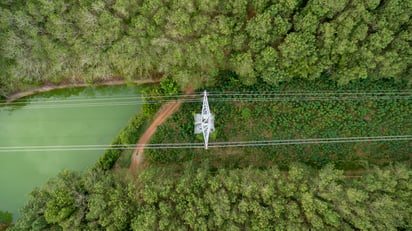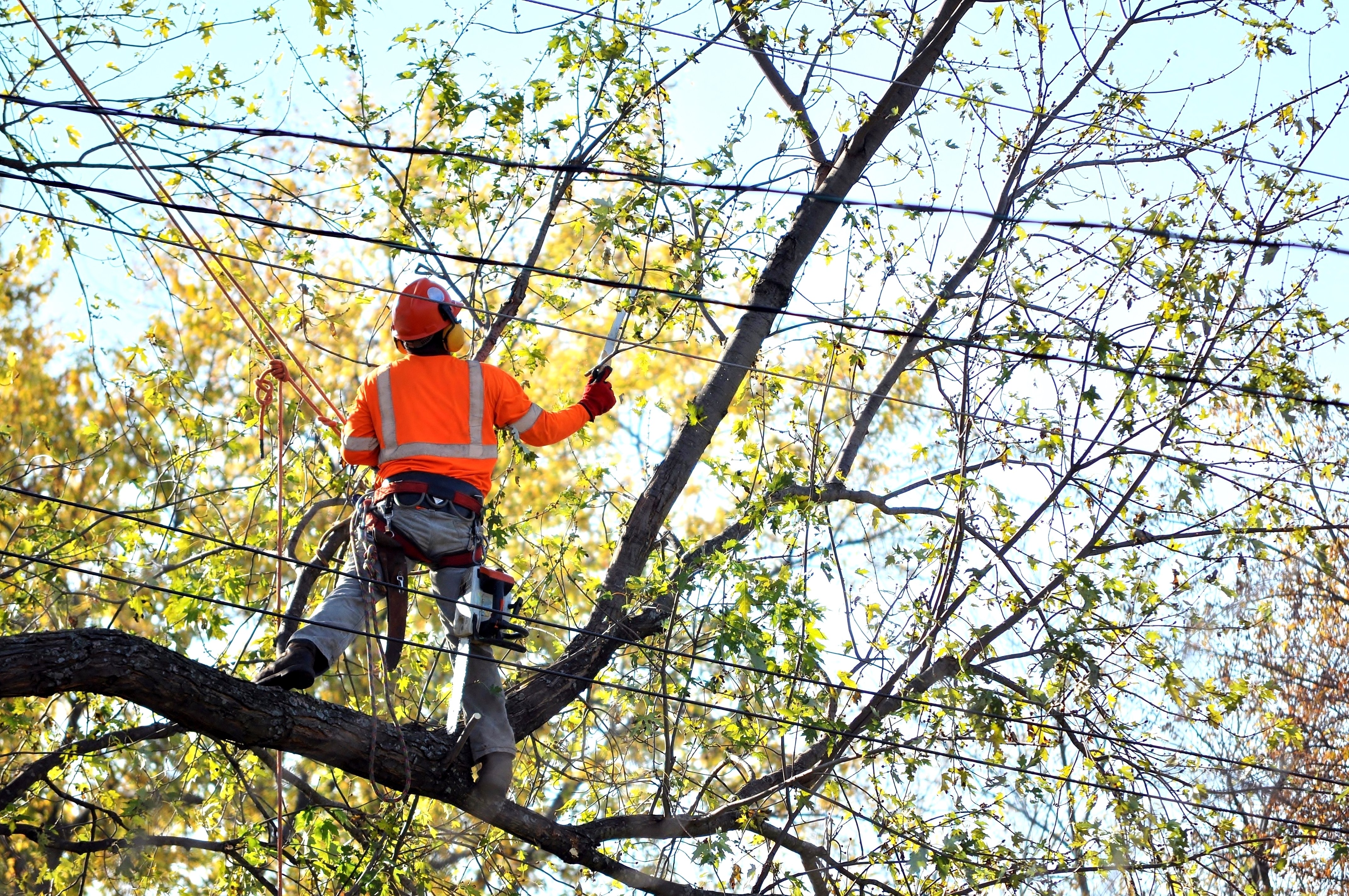Utility vegetation management may seem straightforward — trim any trees near infrastructure — but the reality is very different. The United States covers several biomes with distinct features across its 3.5 million square miles — from the evergreen-lined coasts of Maine to the palmy deserts of California, and from the dense rainforests of the Pacific Northwest to the mangroves of Florida. That’s just the Lower 48 states — Alaska, Hawaii, and the territories have their own challenges.
On top of unique environments, each region has state and federal divisions that may restrict or allow certain approaches to tree management. The result is that managing vegetation across many states, as many large investor-owned utilities do, becomes incredibly complex. Workers in the field may only encounter the standard vegetation common to their area and the best practices allowed in their jurisdiction. But their managers have to constantly juggle shifting economics, legislation, and safety just to maintain clearance between plants and infrastructure.
Today, we’re looking at the different factors across regions of North America that make utility vegetation management a challenge — and the risks that arise in each situation.
Different Regions, Different Techniques, and Different Risks for Utility Vegetation Managers
Cities
By a wide margin, Americans reside in cities and other urban areas. Since utilities are businesses that focus on serving their customers, the most critical work for them occurs in urban centers — including vegetation management. Cities may have less vegetation overall than rural areas, but it comes in proximity to infrastructure much more often.

Most utility vegetation management that happens in cities uses the standard equipment of chainsaws and bucket trucks to trim branches abutting infrastructure. For clearing large areas, workers may use a forest mulcher or Hydro-Ax. Although this work can pose very high risks, the process is standardized, highly visible, and transpires within emergency service territory. Most environmental conditions of cities do not add to the risk of this work.
Yet, there is one major hazard for vegetation managers that is much more prevalent in urban areas: traffic. Contact between motor vehicles and workers is a high-energy hazard responsible for multiple serious injuries and fatalities every year. Trimmers working along roadsides are at significant risk of struck-by injuries from traffic, which resulted in 20 fatalities among forestry workers in 2020 alone.
Key Hazards and Controls
Contact with Motor Vehicles
- Configure barricades between workers and roadways/mobile equipment work areas.
- Appoint flaggers and spotters for vehicles and mobile equipment.
Grasslands
In many ways, the wide open spaces of the Plains are an easier fix for vegetation management. The geographic area that spans Kansas, Nebraska, the Dakotas, and adjacent territories are famously flat and sparsely populated, with few trees. This scenario reduces overall demand on vegetation managers and allows workers easy access to the problem vegetation that is present. In rural areas, workers are often free to cut and lay trees in place — eliminating the hazards of skidding logs or using heavy equipment to mulch them. This combination of positive factors likely explains why Kansas only reported four fatalities from farming, fishing and forestry in 2020 (100% of which were traffic related). Nebraska only reported two.
Rural areas are also typically more accepting of herbicide — a key tool in a vegetation manager’s arsenal, but one that often faces resistance. Herbicides are a quick and cost-effective solution to removing unwanted vegetation without putting workers at risk from elevation, heavy equipment, electric lines, or other common high-energy hazards. (Of course, chemicals are a high-energy hazard themselves that need their own controls.) Areas with significant population typically dislike the idea of chemical controls. But farmlands across the Plains already account for 85% of herbicide use, so residents are more tolerant of their use in utility applications.
Key Hazards and Controls
Chemical Exposure
- Conduct hazardous materials training with any worker using chemicals.
- Store, handle, and dispose of hazardous materials in line with OSHA guidelines.
- Ensure workers use appropriate personal protective equipment (PPE) for any hazardous materials they may encounter.
Forests
In contrast to the Great Plains, conducting vegetation management in the dense forests of New England and the Pacific Northwest can present significant challenges. Unlike in a city or grassland, workers cannot easily drive a bucket truck into a thicket. Rather, workers often need to climb trees and bring them down piece by piece using manual methods.

Even with proper training and personal protective equipment, felling trees is a dangerous activity: Workers at elevation use chainsaws to cut and bring down heavy sections of wood, creating struck-by hazards. The need to climb trees adds another layer of risk, as harnesses offer less fall protection than aerial work platforms. It’s part of the reason why logging workers have a fatal injury rate of 91.7 — 27 times the all-job average.
Workers can also only climb healthy trees. Yet, the most problematic trees in forests may be ones suffering from diseases. For instance, the emerald ash borer has infested and killed millions of ash trees across the Midwest and Northeast over the past 20 years, requiring their removal — but also making them unsafe to climb.
Key Hazards and Controls
Work at Elevation and Suspended Loads
- Ensure fall arrest systems are implemented and working.
- Establish hoisting routes for moving loads, and barricade workers from entry into fall zones.
Mountains
As with many regions, managing vegetation in mountainous regions is easy with herbicide. But if local regulations prohibit chemical controls, the work can prove highly dangerous — much more so than working on flat land.
Mountains have significant slopes to their topography. Unlike on grasslands, this slope prevents workers from laying cut trees in place. Cut trees need to be hauled to a stable location for mulching, otherwise they pose a risk of sliding or rolling to lower elevations and causing uncontrolled damage.
A common technique for vegetation management on mountains is using aerial saws — in effect, a column of circular saws dangling from a helicopter. A pilot then moves the saws slowly along the target area to trim unruly vegetation. It may sound reckless, but aerial saws are actually a much safer and practical alternative to more traditional methods. A single helicopter pilot can move more quickly than a team on foot, and the pilot never comes into direct contact with the power tool itself.
Of course, helicopters and power saws can pose risks, but the overall reduction in risk makes them a prudent choice for managing vegetation in areas that are difficult to access.
Key Hazards and Controls
Suspended Loads
- Establish hoisting routes for moving loads, and barricade workers from entry into fall zones.
- Enforce hard hats to prevent struck-by injuries from falling objects.
- Hire specialists and conduct specialized training for high-powered equipment (e.g., aerial saws).
Wetlands

Power transmission to the Deep South and Florida often requires infrastructure to cross wetlands, which present their own vegetation challenges. Riparian trees can still disrupt infrastructure, but their location makes them impossible to approach with land vehicles. Utility vegetation managers turn to amphibious machinery, such as Marsh Masters, to maneuver across swamps and bogs close enough to reach the hazardous vegetation.
Although this pontoon equipment provides a stable enough surface from which to operate, the nature of operating around water raises the overall risk of the activity. Although water is not a high-energy hazard itself, it raises the likelihood of slips, trips, and falls from elevation and can serve as a powerful conductor if it makes contact with electricity. It also presents a risk of drowning should a fall occur.
Key Hazards and Controls
Working Near Water
- Ensure life jackets or buoyant work vests are equipped, functional, and free of defects.
- Ensure fall arrest systems are implemented and working.
- Maintain ring buoys and lifesaving skiffs near work locations.
Desert
Like Plains, desert areas are fortunately open and easy to access. Workers can typically drive vehicles freely, and there’s little issue with laying cut trees in place.
But simply working in the desert environment itself puts vegetation managers at risk. Heat is a major risk for field workers in desert areas, where sun exposure can cause heat stroke in minutes. Workers need to take special precautions for working outside in the heat, ensuring frequent breaks in shade and proper hydration to combat the risk of heat illness.
Key Hazards and Controls
Working in Heat
- Drink at least one cup of cool water every 20 minutes.
- Take frequent breaks in a cool, shaded area to recover from heat.
- Wear breathable clothing and sun protection, such as wide-brim wats, UV-rated eye protection, and sunscreen.
The Challenge of Variation
While each geographic region has its hazards, part of the challenge with managing vegetation across wide territories is the variation required to get the job done. Plains and mountains, herbicide and aerial saws all have their risks, but the need to deploy different techniques in different jurisdictions lessens efficiency and makes oversight more onerous. Operations management is forced to spread its finite attention over multiple territories, activities, and controls that raises the likelihood of a safety situation falling through the cracks.
Yet, at present, this checkerboard of approaches is the only way to maintain clearance between vegetation and infrastructure on a national scale. In turn, it becomes yet another factor that makes utility vegetation management a uniquely hazardous process — but an essential one, from coast to coast.
Curious to learn more about the safety hazards of utility vegetation management? Subscribe to our newsletter below.

